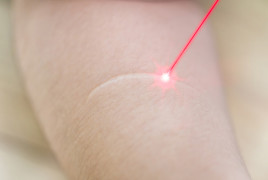Vitiligo: Tips for managing
Vitiligo skin care tips
Millions of people worldwide have vitiligo, a condition that causes the skin to lose its natural color, resulting in patches of light skin. Although the white or light patches do not typically cause other symptoms, the condition can cause low self-esteem and depression in patients.
Although there is no cure for vitiligo, these tips from board-certified dermatologists can help make vitiligo less visible and prevent the condition from spreading.
Dermatologists share the following tips with their patients who have vitiligo.
Protect your skin from the sun
Everyone who has vitiligo can benefit from sun protection. Skin that has lost its natural color tends to sunburn easily. A bad sunburn can worsen vitiligo.
If you have fair skin, there’s another advantage to protecting your skin from the sun. Without a tan, vitiligo is often barely noticeable.
For anyone who chooses to treat their vitiligo by having their remaining skin color removed, sun protection is essential. The sun can cause spots of color to form on your skin. To remove these spots, you will need to depigment your skin again.
To protect your skin from the sun, dermatologists recommend that you:
Use sunscreen every day. You want to apply sunscreen to all skin that clothing will not cover. To get the protection you need, apply the sunscreen at least 15 minutes before going outside.
- Every 2 hours
- After spending time in the water
- When you sweat
Wear clothing that protects your skin from the sun. Clothing also has an SPF. When it comes to SPF, not all clothing is equal. A long-sleeve denim shirt gives you an SPF of about 1,700. T-shirts offer significantly less protection. A white t-shirt tends to give you SPF 7; whereas, a green t-shirt may give you SPF 10.
Seek shade. This is especially important when your shadow is shorter than you are. That’s when the sun’s damaging rays are at their strongest and you are likely to sunburn.
Do not use tanning beds and sun lamps. These are not safe alternatives to the sun. These, too, can burn skin that has lost pigment.
Add color to your skin safely. If you want to add color to your skin, consider using self-tanner, concealing cream, dye, or makeup.
Do not get a tattoo. Getting a tattoo can cause something called the Koebner phenomenon. What this means is when you wound your skin, which getting a tattoo does, a new patch of vitiligo can appear about 10 to 14 days later.
Use sunscreen every day
When spending time outdoors, reapply sunscreen:

Learn about vitiligo
It helps to know about treatment options so that you know what is possible. Learning more about vitiligo can help you decide what treatment, if any, feels right for you. You may want to treat, camouflage, or just let the vitiligo be. Only you can decide what’s right for you.
It's important to see a dermatologist
If you decide not to treat vitiligo, it’s still important to see a dermatologist. Vitiligo is a medical condition, not just a cosmetic concern.

Connect with others who have vitiligo
The emotional aspects of having vitiligo are often overlooked, but they are real. If a child has vitiligo, other children may tease and bully. People can stare. Studies conclude that many people who have vitiligo have a decreased quality of life.
Connecting with others who have vitiligo can help. You will find links to support groups below.
Support groups
Vitiligo Friends
Vitiligo support group
Related AAD resources
More resources
Images
References
Halder RM. “Vitiligo.” Forum presented at the 2011 American Academy of Dermatology Annual Meeting: New Orleans. February 2011.
Linthorst Homan MW, Spuls PI, de Korte J et al. “The burden of vitiligo: patient characteristics associated with quality of life.” J Am Acad Dermatol 2009; 61: 411-20
 Think sun protection during Skin Cancer Awareness Month
Think sun protection during Skin Cancer Awareness Month
 How to care for your skin if you have lupus
How to care for your skin if you have lupus
 Practice Safe Sun
Practice Safe Sun
 Sunscreen FAQs
Sunscreen FAQs
 Fade dark spots
Fade dark spots
 Hidradenitis suppurativa
Hidradenitis suppurativa
 Laser hair removal
Laser hair removal
 Scar treatment
Scar treatment
 Botox
Botox
 Kids' camp - Camp Discovery
Kids' camp - Camp Discovery
 Dermatologist-approved lesson plans, activities you can use
Dermatologist-approved lesson plans, activities you can use
 Find a Dermatologist
Find a Dermatologist
 Why choose a board-certified dermatologist?
Why choose a board-certified dermatologist?